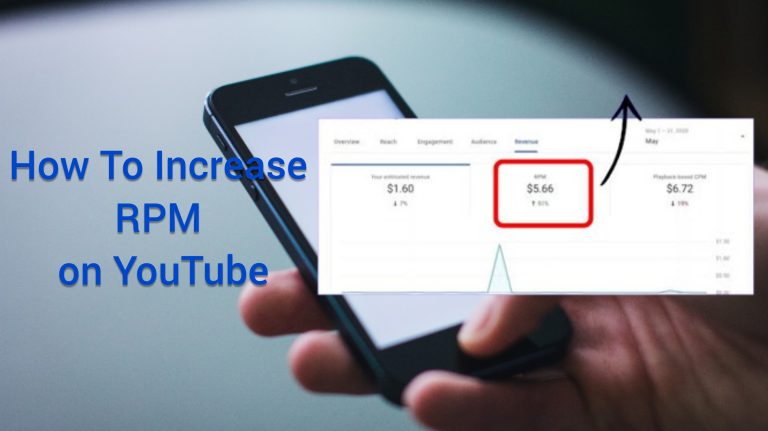How Much Is 1 View on YouTube?

YouTube, the popular video-sharing platform, has revolutionized the way we consume content. With billions of users and a staggering number of videos uploaded every minute, it has become a playground for content creators and marketers alike. But have you ever wondered about the true value of a single view on YouTube? In this article, we’ll delve into the complexities of YouTube views, shedding light on their significance, monetization, and factors influencing their worth.
Understanding YouTube Views
YouTube views are the lifeblood of the platform, representing the number of times a video has been watched. While views act as a primary metric for measuring a video’s popularity, their real worth extends far beyond mere vanity metrics.
The Value of a Single View
Each view carries intrinsic value for content creators and YouTube itself. However, putting an exact monetary figure on one view can be challenging, as it depends on various factors such as ad revenue, engagement, and the content’s niche.
Ad Revenue and Monetization
YouTube creators can monetize their content through ads. The revenue earned per view largely depends on the ad formats displayed, viewer demographics, and the advertiser’s bidding strategy.
Engagement and Video Performance
Engagement metrics, like likes, comments, and shares, play a crucial role in determining a video’s worth. High engagement signals YouTube’s algorithm that the content is valuable, leading to higher visibility and potentially more revenue.
Niche and Audience
The topic of a video and its target audience significantly impact its value. Niche content with a dedicated, passionate audience may be more valuable than generic videos with a broad but disengaged viewership.
Factors Influencing View Worth
The value of one view is not fixed and can fluctuate due to various factors.
1. Geographical Location
Viewers from different countries can have varying ad rates, impacting the revenue generated from each view.
2. Seasonal Trends
Some content experiences increased viewership during specific seasons or events, influencing the worth of a view during such periods.
3. Video Length and Watch Time
Longer videos with higher watch times may generate more revenue, but shorter videos can be equally valuable if they drive engagement and lead to other actions.
4. Trending and Virality
Videos that go viral or trend often attract a surge in views, boosting their worth temporarily.
Making Views More Valuable
Content creators can take steps to enhance the value of their views and overall channel performance.
High-Quality Content
Producing valuable, well-produced content encourages viewers to watch more, engage, and share, increasing the view’s worth.
Understanding the Audience
Knowing the preferences of the target audience allows creators to tailor content that resonates with them, leading to more valuable views.
Collaboration and Cross-Promotion
Collaborating with other creators and cross-promoting each other’s content can widen the reach and attract more valuable views.
YouTube Views vs. Engagement: Striking a Balance
While views are essential, creators should focus on building a loyal, engaged audience as they offer long-term value and sustainability.
Conclusion
One view on YouTube is more than just a number; it represents a multitude of factors that determine its value. From ad revenue to engagement and audience targeting, content creators must consider various elements to make their views more valuable. Balancing quantity with quality and understanding the ever-changing YouTube landscape will lead to a successful and rewarding channel.
FAQs
1. How much money does 1 view on YouTube make?
The earnings from one view can vary widely depending on factors such as ad revenue, viewer demographics, and the content’s niche. There is no fixed amount per view, as YouTube’s revenue model is dynamic.
2. Can views be manipulated on YouTube?
Engagement and views can be influenced by deceptive practices, but YouTube actively combats such behavior through its algorithms and policies. Creators should focus on organic growth and genuine engagement.
3. Are all views counted on YouTube?
YouTube employs strict criteria for counting views to ensure accuracy and legitimacy. Views from bots or deceptive sources are often filtered out.
4. Can I monetize my YouTube channel with a small number of views?
Yes, you can monetize your channel even with a small number of views. However, significant revenue usually comes with higher view counts and strong engagement.
5. How long should my YouTube videos be to maximize their value?
Video length should align with the content’s purpose and audience preferences. Longer videos that retain viewers’ attention may generate more revenue, but shorter, engaging videos can also be valuable.
Remember, creating valuable content and building a dedicated audience are key to making views on YouTube truly valuable. So, keep honing your skills, exploring new ideas, and engaging with your viewers to thrive on this dynamic platform. Happy creating!
Determining the exact dollar value of one view on YouTube is challenging because it depends on several factors. The revenue generated from one view is not a fixed amount and can vary significantly based on various elements, such as:
1. Ad Formats: Different ad formats have different rates, and some formats pay more than others. For instance, skippable ads might pay differently than non-skippable ones.
2. Geographic Location: The country or region where the viewer is located can influence the ad rates. Advertisers might pay more to target specific regions with higher purchasing power.
3. Audience Demographics: The demographic information of the viewers, such as age, interests, and gender, can affect the ad rates and the overall revenue generated per view.
4. Content Niche: The subject matter of the video plays a role in attracting certain types of advertisers, which in turn affects the ad rates.
5. Viewers’ Engagement: Higher engagement, such as likes, comments, and shares, can indicate valuable content to advertisers and YouTube’s algorithm, potentially leading to higher ad rates and revenue.
Given these factors, it’s difficult to provide an exact figure for how many dollars one view on YouTube is worth. Additionally, YouTube’s revenue model is subject to change over time based on market dynamics and platform policies.
To maximize revenue, content creators often focus on building an engaged audience, targeting specific demographics, producing high-quality content, and optimizing ad placement. As their channel grows and attracts more viewers, the potential revenue per view increases.






